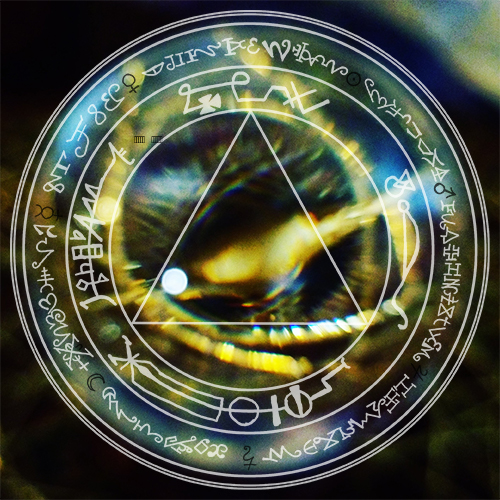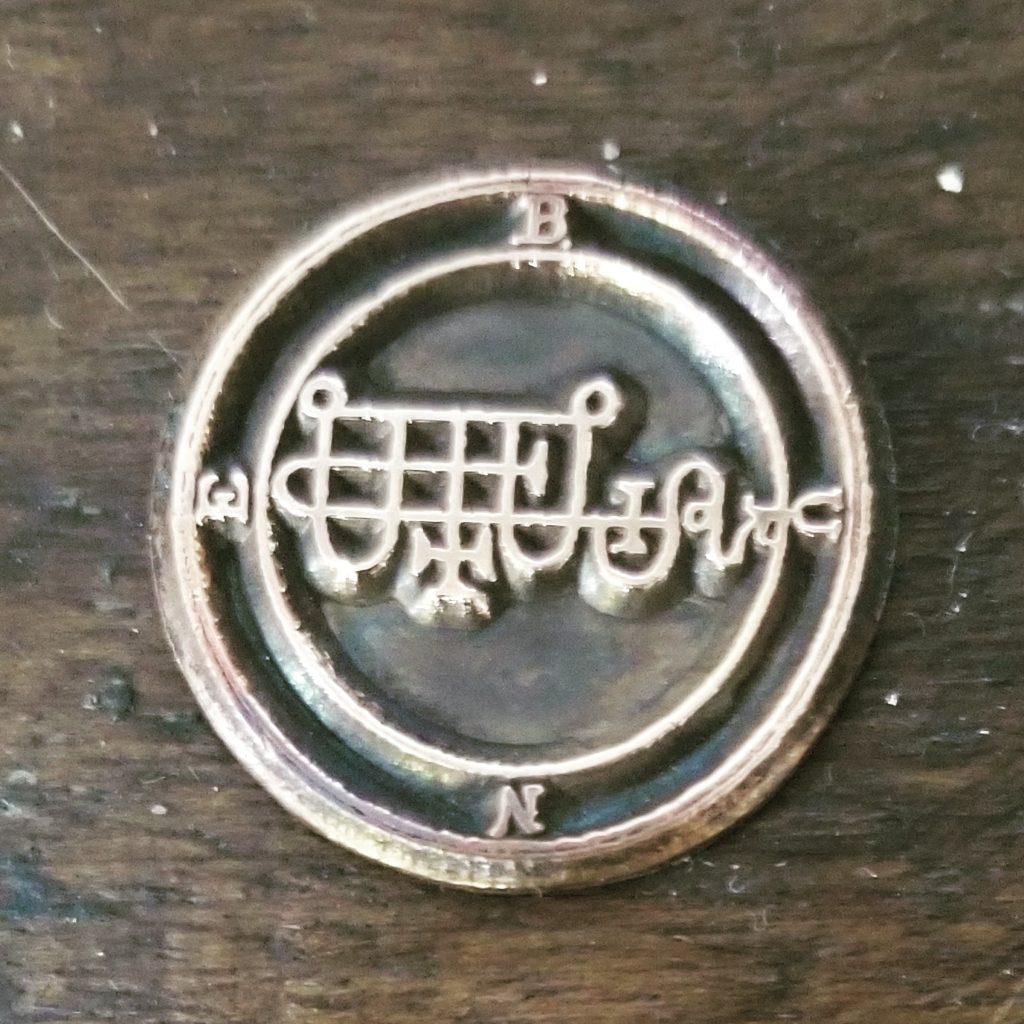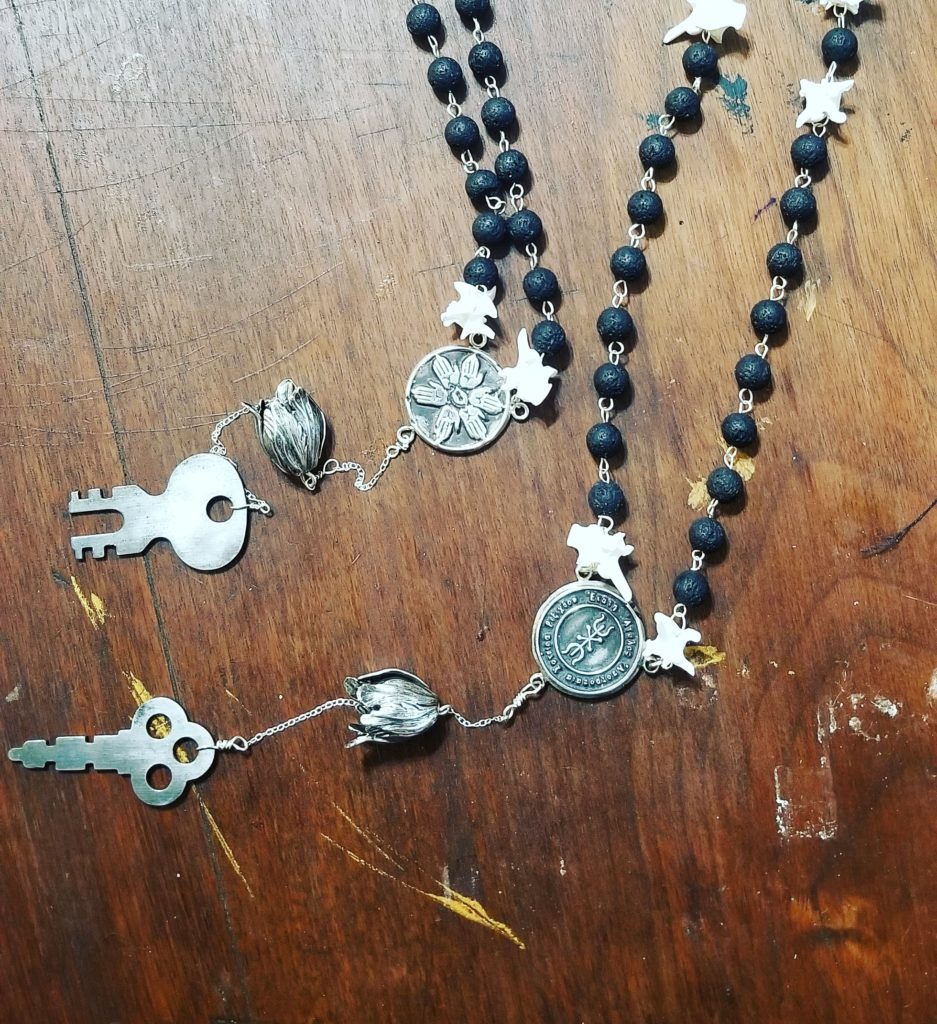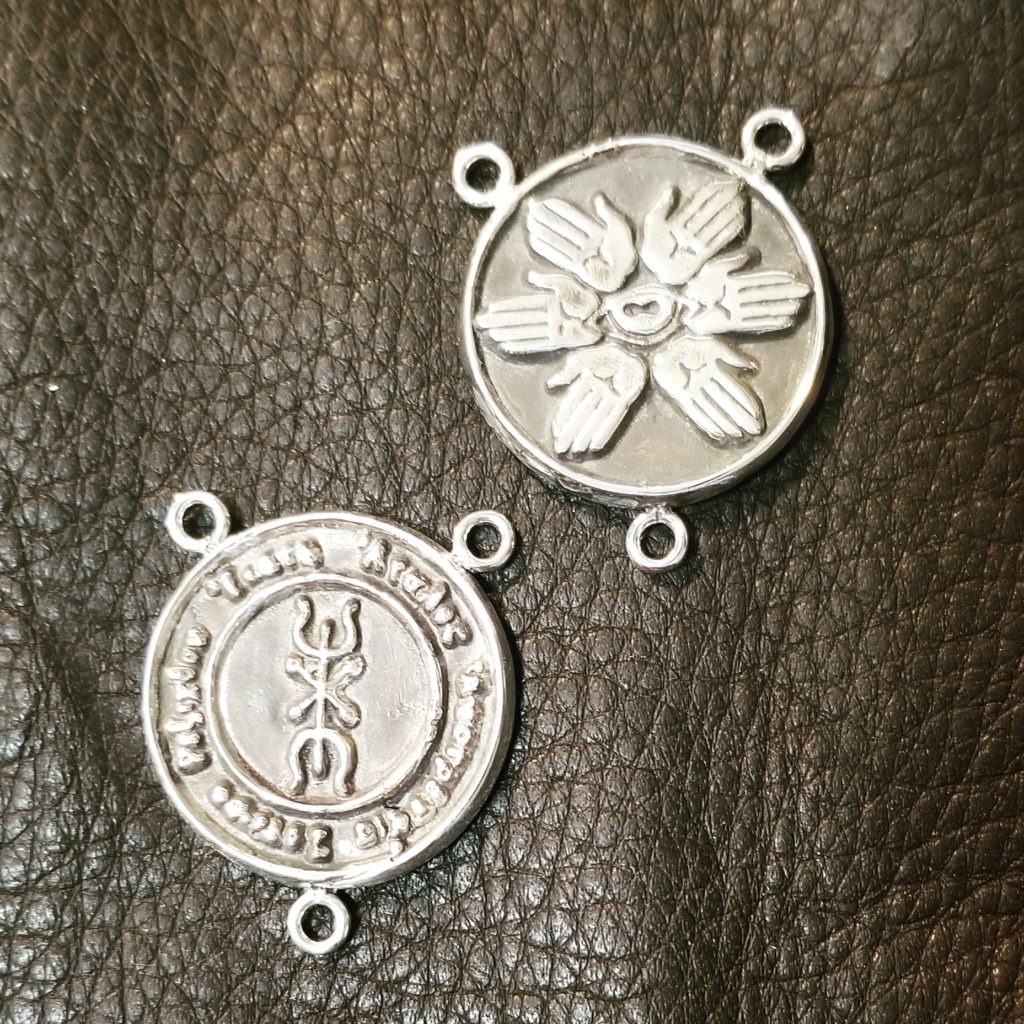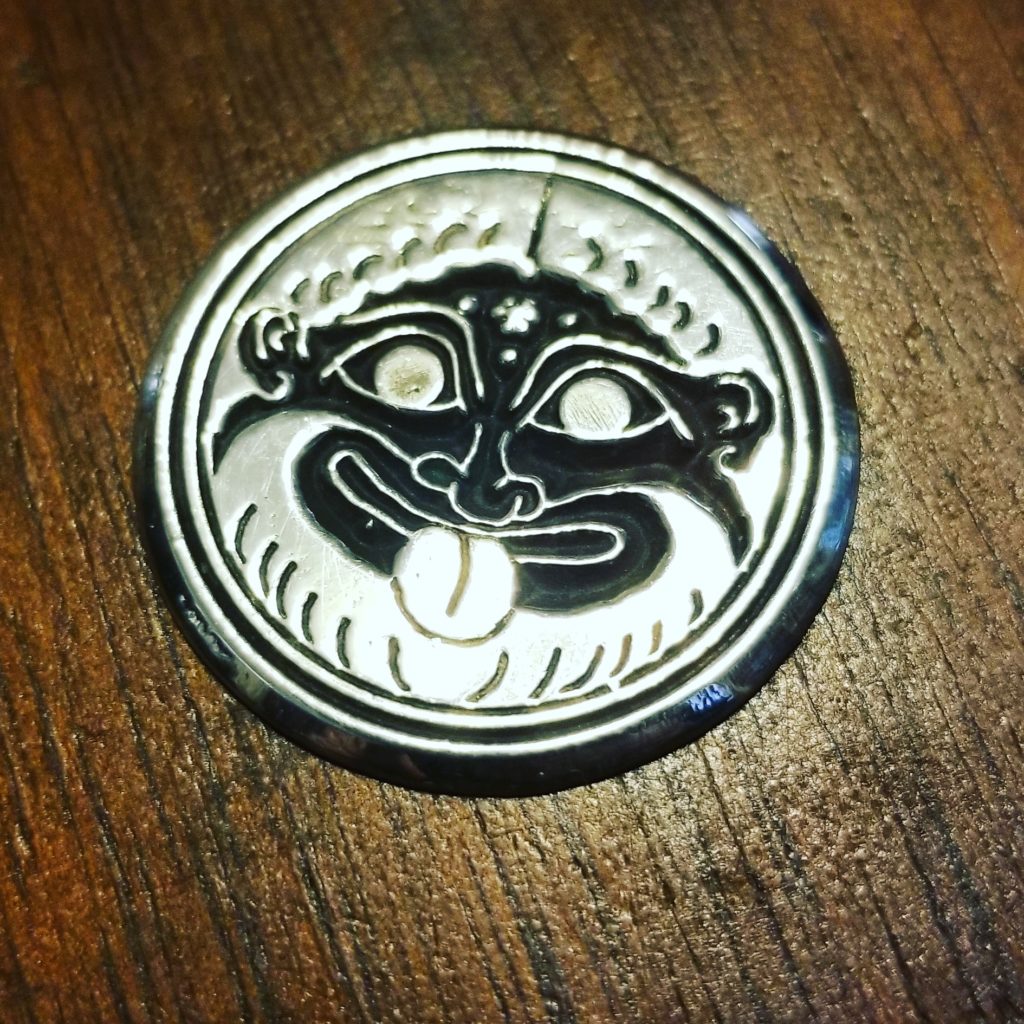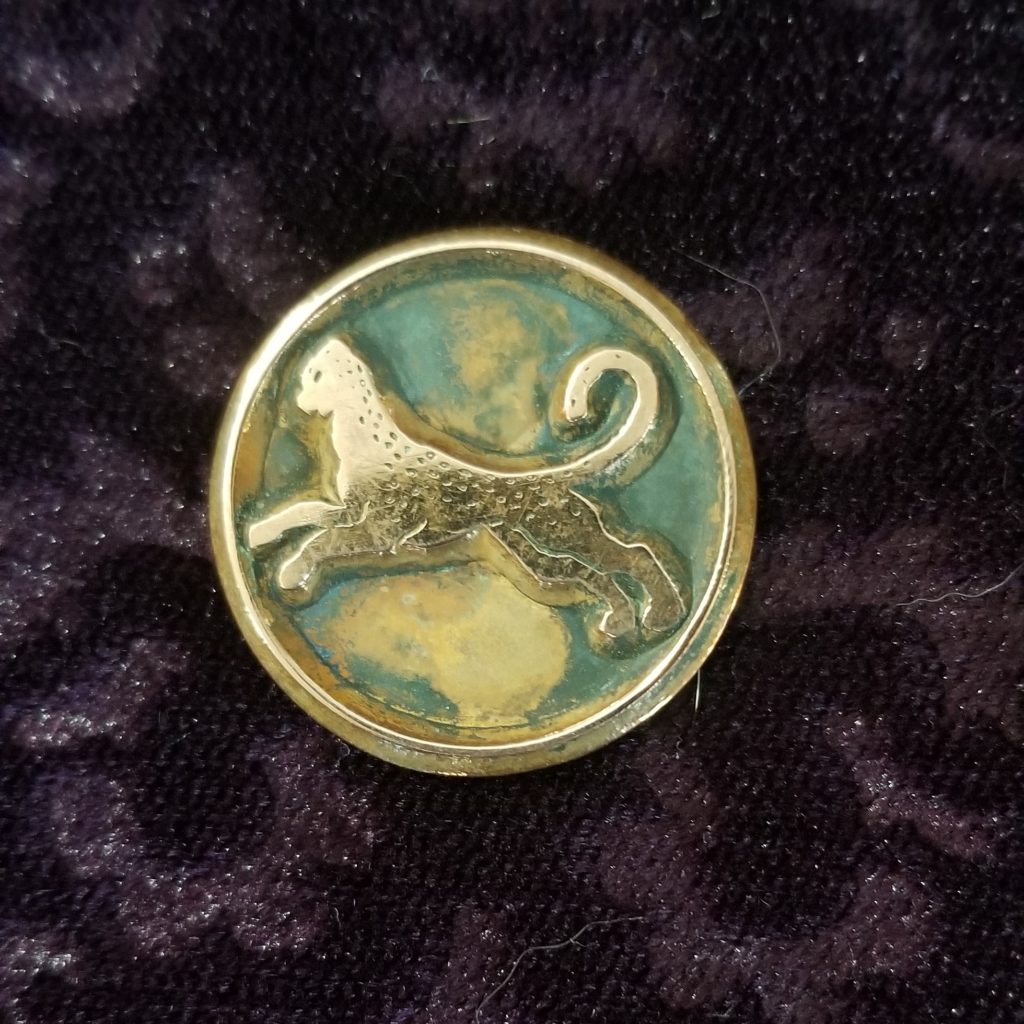
This past Sunday, Aradia and I took one of the rituals from the class we’re taking on the Greek Magical Papyri and adapted it into an esbat rite for our Lunar Shenanigans crew. The results were very well received, and good times were had by all, so I thought I’d share it here.
The core conceit, of course, is the prayer PGM VII 756-94, which is presented essentially without context. To this we added an anointing oil, such as seen in the Helios ritual we had also done as a part of Jack Grayle’s PGM Praxis course. To maximize the benefits of the oil, we mixed it by a consensus process: several Shenanigans members bringing oils and maeteria to contribute to my and Aradia’s collection, and deciding in the moment which to add and which to not, and then blessing the oil and the altar with the Orphic Hymn to Selene. We used the Thomas Taylor translation of the Hymn, presented below with a few alterations, because I did not have time to transcribe the Dunn or Athanassakis translations, which I would otherwise prefer, and because Taylor is in the public domain.
Looking at the PGM prayer, itself, you will see that I have broken the barbarous words / magical names / Vocces Magicae out into single-sound chunks. That’s because they’re the hardest VM I have ever tried to pronounce, and I wasn’t going to send my friends in without preparation.
Reports from within my inner circle so far, particularly those of us in the PGM class, have found that the ritual produces increased energy, sometimes insomnia, immediately, followed by a surprising amount of pep come dawn for the next several days.
Outline
- Preparation
- Erect a temple space, ideally before your group arrives, with an inner and outer portion
- In the outer temple space, set up options for purification. Possible options include
- Fumigation (sage, sulfer, storax, whatever)
- Wash hands and face in lustral waters (my blend is salt, Florida water, and tap water)
- Dust hands with cinnamon (as described in Hekataeon and elsewhere)
- Process into the empty temple space
- Consecrate Temple and Tools
- As a group, build or rebuild the altar for the Lunar powers you will invoke, including candles for each of your Lunar gods (in our case, Selene and Hekate
- Set up a scrying medium
- Blend your anointing oil as a group
- Pour wine offering to Moon
- Bless oil and candles with Orphic Hymn to Selene (and/or Hekate to taste)
- Adapted and Expanded PGM VII 756-94
- Pour wine offering
- Light candles
- Suffumigations of myrrh (and other lunar incense?)
- Anoint hands, face, head with lunar oil
- Chant prayer
- Repeat 4, 5 twice (three times total)
- Final anointing with lunar oil
- Water scrying
- Thank goddess(es) for their attendance
- Final wine offering
- Poscript
- Drink copious amounts of wine
- Tarot & other divination for yourself and your friends
ORPHIC HYMN TO SELENE
Hear, goddess queen, diffusing silver light,
Bull-horned and wandering through the gloom of night.
With stars surrounded, and with circuit wide
Night’s torch extending, through the heavens you ride:
Female and male with borrowed rays you shine,
And now full-orbed, now tending to decline.
Mother of ages, fruit-producing moon,
Whose amber orb makes night’s reflected noon:
Lover of horses, splendid, queen of night,
All-seeing power bedecked with starry light.
Lover of vigilance, the foe of strife,
In peace rejoicing, and a prudent life:
Fair lamp of night, its ornament and friend,
Who gives to nature’s works their destined end.
Queen of the stars, all-wise Artemis hail!
Decked with a graceful robe and shining veil;
Come, blessed goddess, prudent, starry, bright,
Come luner lamp with chaste and splendid light,
Shine on these sacred rites with prosperous rays,
And please
accept your suppliant’s mystic praise.
PGM VII 756-94
I call upon you, who have all forms and many names, double-horned goddess MENE, whose form no one knows
(except him who made the entire world, IAO The one who shaped you into the twenty-eight shapes of the world So that you might complete every figure and distribute breath to every animal and plant, That it might flourish);
you who wax from obscurity into light, and wane from light into darkness.
And the first companion of your name is silence,
The second a popping sound,
The third a groaning,
The fourth hissing,
The fifth a cry of joy,
The sixth moaning,
The seventh barking,
The eight bellowing,
The ninth neighing,
The tenth a musical sound,
The eleventh a sounding wind,
The twelfth a wind-creating sound,
The thirteenth a coercive sound,
The fourteenth a coercive emanation from perfection.
Ox! Vulture! Bull! Beetle! Falcon! Crab! Dog! Wolf! Serpent! Horse! She-Goat!
Asp! He-Goat! Baboon! Cat! Lion! Leopard! Fieldmouse! Deer!
Multiform, virgin, torch, lightning, garland, a herald’s wand, child, key:
I have said your signs and symbols of your name so that you might hear me,
Because I pray to you, Mistress of the whole world.
Hear me, you, the Stable One, the Mighty One:
APH-EI-BO-E-O MIN-TER OKHA-O PI-ZEPH-Y-DOR KHAN-THAR KHA-DER-OZO
MOKH-THI-ON E-OT-NEU PHER-ZON A-IN-DES LAKH-AB-O-O PIT-TO RIPH-THA-MER
ZMO-MOKH-OL-EI-E TI-ED-RAN-TEI-A O-I-SO-ZO-KHA-BE-DOR-PHRA









